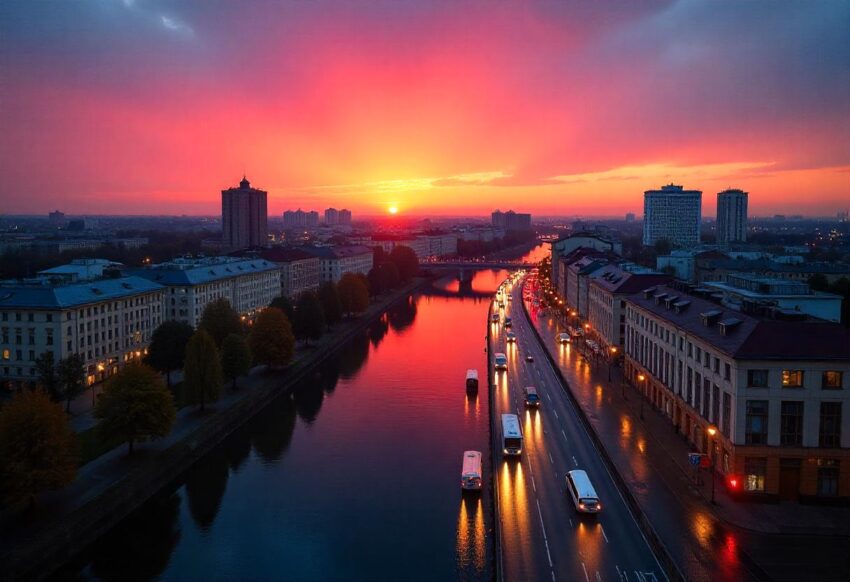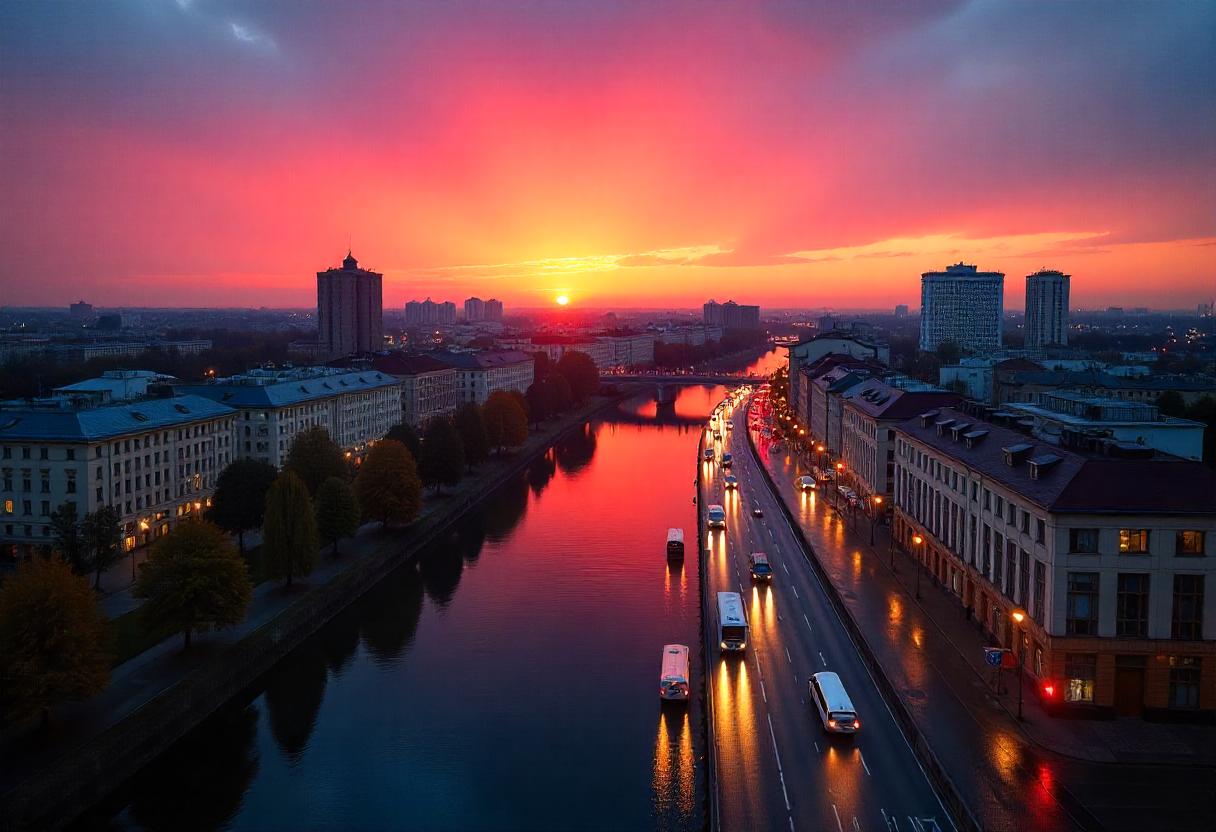Saturday, July 19, 2025

Under a sweeping visa-free travel policy aimed at reviving its tourism sector and boosting regional connectivity, Belarus has made a formal attachment to Italy, Spain, Switzerland, the UK, Greece, Portugal, Denmark, Poland and thirty more other nations in Europe. This daring gamble, which currently permits citizens of 38 European states visa-free entry for up to 30 days and has brought in more than 120,000 tourists—a resounding success for Belarus’s strategy of pulling in visitors by easing borders, expanding access by land and air and broadening cultural openness.
Belarus has seen a remarkable boost in its tourism industry following the expansion of its visa-free entry program. As of July 2025, the Eastern European nation has welcomed over 120,000 tourists from across the continent under a new policy that allows citizens of 38 European countries to enter the country without a visa. Among these, Italy, Switzerland, the United Kingdom, Greece, Portugal, and Denmark have been cleared for inclusion, highlighting Belarus’ commitment to fostering regional travel and easing border formalities.
This bold step is part of a larger strategy by the Belarusian government to revitalize tourism, strengthen people-to-people ties, and attract more international visitors by simplifying travel rules. The surge in arrivals marks a significant milestone in Belarus’ efforts to open up to Europe amid shifting geopolitical landscapes and growing interest in undiscovered travel destinations.
A Turning Point in Belarus’ Tourism Policy
The groundwork for Belarus’ visa-free travel strategy was first laid in April 2022, when the country initially opened its land borders to citizens of neighboring countries — Latvia, Lithuania, and Poland — allowing them to visit without needing to obtain a traditional visa. This pilot phase provided valuable insights into border control management and the economic impact of short-term, visa-free visits.
Following its success, a major policy expansion was announced. On 19 July 2024, Belarus extended visa-free entry to citizens of 35 additional European countries, taking the total number of eligible nations to 38. This decision, made by the President of Belarus, was implemented across all international road and railway checkpoints, as well as airports, ensuring comprehensive accessibility.
Eligibility and Entry Conditions
The visa-free regime permits citizens from the designated European countries to enter and exit Belarus without a visa, provided they use official international border crossings. Travelers must carry valid passports or travel documents and can remain in the country for up to 30 days from the date of entry. Citizens of Poland, Latvia, and Lithuania (including non-citizens of Latvia) are granted a longer stay of up to 90 days under a bilateral agreement.
This visa-free access applies to all modes of overland travel, including cars and buses, which has made Belarus particularly accessible to travelers seeking convenient cross-border tourism. The visa-free policy also continues to apply at Belarusian airports, enabling broader reach and flexibility for European air travelers.
One limitation to note is that while Belarus offers transit to third countries, travel to or from Russia via Belarus remains restricted under this program due to the absence of mutual visa recognition between the two nations.
38 European Countries Now Eligible
The list of countries covered under the visa-free initiative includes nearly the entire European continent. Below is the full list of eligible nations:Country NameVisa-Free DurationAndorra30 daysAustria30 daysBelgium30 daysBosnia and Herzegovina30 daysBulgaria30 daysCroatia30 daysCyprus30 daysCzech Republic30 daysDenmark30 daysEstonia30 daysFinland30 daysFrance30 daysGermany30 daysGreece30 daysHungary30 daysIceland30 daysIreland30 daysItaly30 daysLatvia90 daysLithuania90 daysLuxembourg30 daysMalta30 daysMonaco30 daysNetherlands30 daysNorth Macedonia30 daysNorway30 daysPoland90 daysPortugal30 daysRomania30 daysSan Marino30 daysSlovakia30 daysSlovenia30 daysSpain30 daysSweden30 daysSwitzerland30 daysUnited Kingdom30 daysVatican City30 days
This extensive list reflects Belarus’ determination to position itself as a more integrated and approachable destination for European travelers.
Tourist Arrivals Surpass 120,000 in One Year
Since the policy’s rollout in July 2024, over 120,000 European tourists have crossed into Belarus using the visa-free system, according to data released by the State Border Committee of Belarus. These visitors primarily entered through land crossings, particularly at Kamenny Log, one of the busiest checkpoints along the Lithuanian border.
Lithuania remains the top source country, accounting for the highest number of travelers under this initiative. However, arrivals from Poland, Latvia, Estonia, Germany, the UK, Italy, and other countries have also significantly increased.
The land crossing points still open to tourist traffic — such as Kamenny Log, Benyakoni, Peschatka, and Novaya Rudnya — have been critical in handling this new wave of visitors. According to border officials, traffic flows have been steady, and the infrastructure has adapted well to the higher demand, aided by digitized passport checks and extended service hours.
Over One Million Visitors in Three Years
While the most recent numbers emphasize the impact of the expanded program, the broader visa-free policy — initiated in 2022 — has already seen over 1.15 million visitors from across Europe in the past three years. These figures are particularly impressive considering the challenges posed by the pandemic and other global disruptions to travel.
The successful uptake of the visa-free scheme suggests a growing confidence among European travelers in visiting Belarus, a country often overlooked in traditional tourist itineraries but rich in culture, nature, and history.
Economic and Cultural Benefits
The influx of European tourists has had a noticeable impact on the local economy. Small businesses, local hotels, restaurants, and tour operators near border regions have benefited from increased foot traffic. Destinations such as Brest Fortress, Grodno’s Old Town, the castles of Mir and Nesvizh, and the vast Belovezhskaya Pushcha National Park are experiencing renewed interest.
The policy is also fostering greater cultural exchange. Visitors from Europe are gaining a more nuanced understanding of Belarusian heritage, cuisine, language, and traditions. Events, festivals, and local markets are seeing more foreign faces, and this mutual engagement is helping to slowly reshape Belarus’ image abroad.
Safety, Regulation, and Monitoring
While Belarus is opening its borders to more travelers, the country maintains a strong emphasis on border safety, documentation, and security protocols. Tourists must register with the local authorities upon arrival, either online or through hotels, and must comply with the 30-day maximum stay unless applying for further permits.
Authorities have emphasized that the visa-free system is strictly for tourism and short-term visits. Any form of employment, study, or long-term residency still requires appropriate documentation.
Strategic Positioning Amid Geopolitical Shifts
Belarus’ decision to extend visa-free access comes at a time when cross-border diplomacy, regional tourism, and alternative travel destinations are playing increasingly important roles in shaping global tourism flows. With some European travelers seeking new, affordable, and culturally rich destinations, Belarus is positioning itself as a strategic choice — one that offers a combination of nature, heritage, Slavic hospitality, and accessibility.
The program also reflects Belarus’ ambitions to remain connected with Europe, despite political complexities. In making travel easier for millions of Europeans, Belarus is demonstrating an openness to people-to-people diplomacy, even while formal governmental relations may remain cautious.
What Lies Ahead
The Belarusian government has hinted at future developments, including the potential to extend the duration of visa-free stays or expand the program to non-European nations. There are also discussions around improving digital platforms for travel authorization, enhancing multilingual support at key checkpoints, and promoting package tourism options through regional travel agencies.
In the meantime, the policy remains a strong step forward for Belarus — a country quietly transforming from a transit zone into a travel destination in its own right.
With over 120,000 tourists already taking advantage of the new policy in just one year, and over 1.15 million since the program’s inception, Belarus’ visa-free travel strategy appears to be paying off. Italy’s recent clearance — alongside Switzerland, the UK, Greece, Portugal, Denmark, and 32 other countries — marks a broader commitment to reconnecting with Europe and positioning Belarus as a welcoming gateway to Eastern Europe.
A similar measure and trend extends to Belarus, which has recently announced, inter alia, visa-free entry for citizens of Italy, Spain, Switzerland, UK, Greece, Portugal, Denmark, Poland and thirty other countries, and, as a result, in just one year, this country has already adrenaline-pumped over one hundred twenty-thousand tourists to visit. The broad measure seeks to promote tourism and strengthen connections with 38 European countries through greater cross-border penetration.
As the list of visa-free countries grows, so does the promise of deeper cultural ties, stronger tourism revenue, and a richer travel experience for all involved.

